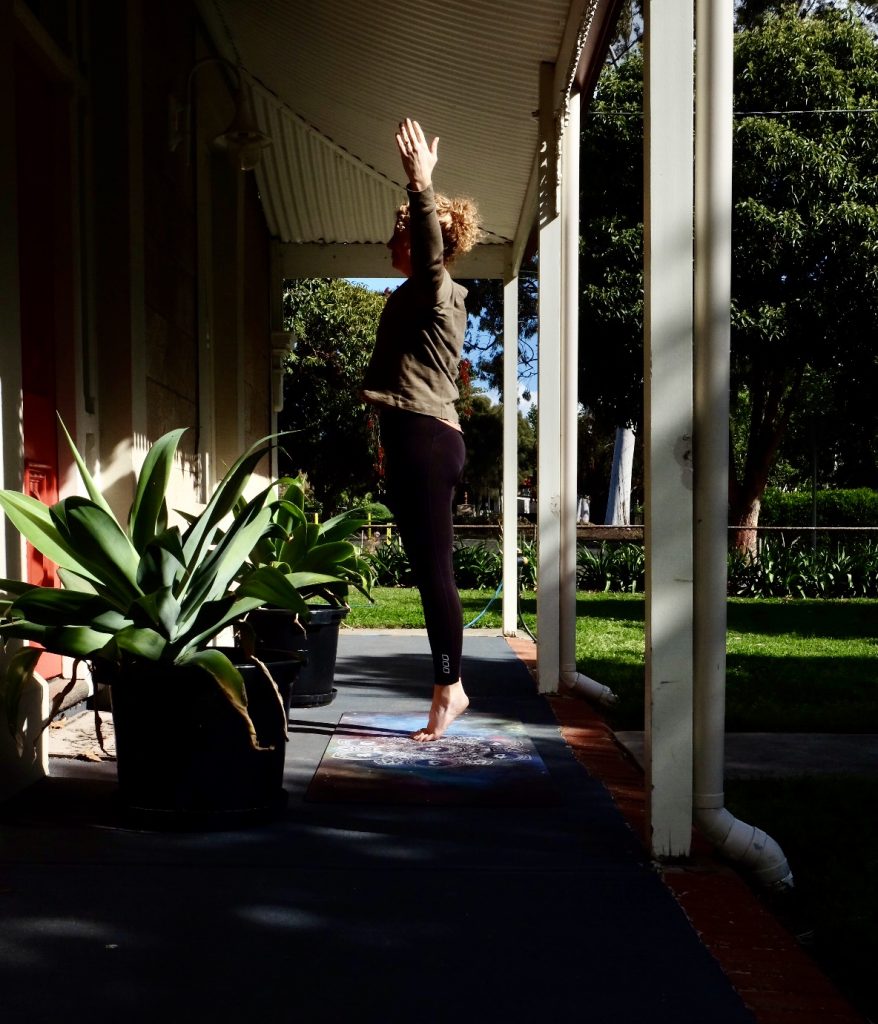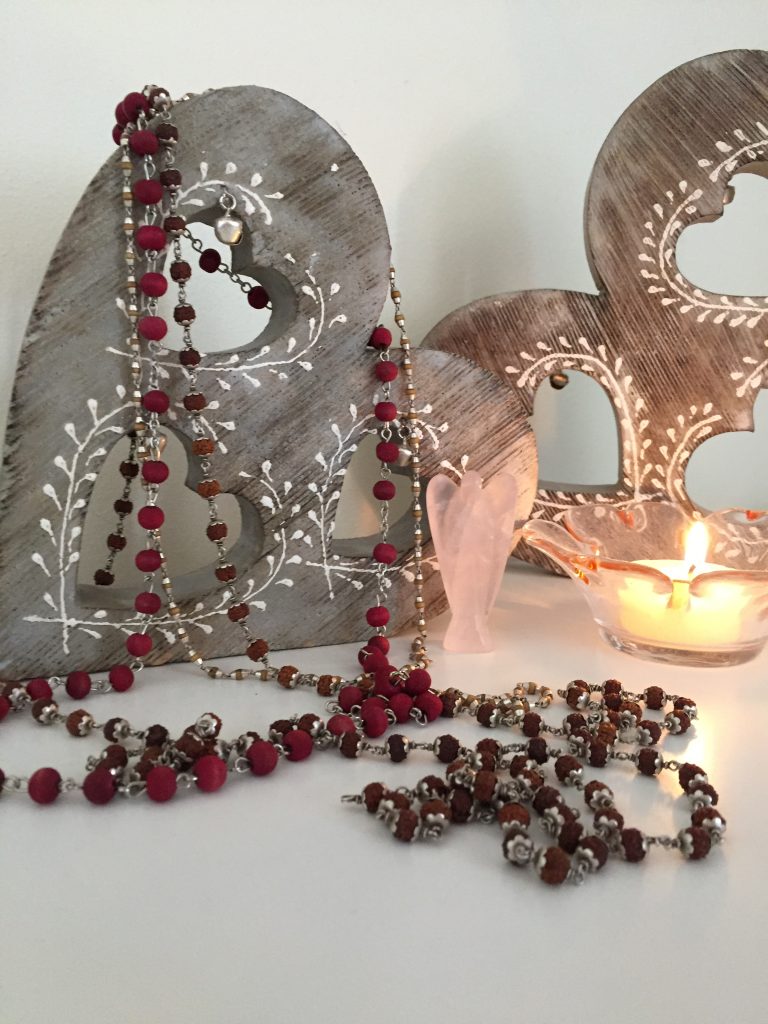Samasthiti And Ṭadāsāna And Their Association with the yoga sutras

Everything in this life is connected and I am passionate about its intertwining nature and how my sense of yoga moves past the mat and into all aspects of life.
As a student you may have heard the words of samasthiti and/or tadasana used in a yoga class. These are two names given for the foundation asana-s of a standing practice.
I personally hadn’t encountered the asana of samasthiti in my early Yoga classes or teacher training so it was a new term for me.
You may ask is there a difference? I guess it really depends on how and where the learning of your own yoga teachers has originated from.
Ṭadāsāna; is a posture that translates in many classes as Mountain pose.
tada – mountain and also straight tree
asana – pose or posture
Samasthiti; translates as establishing an equal and steady stance.
sama – same, equal, or upright
sthiti – to establish or to stand
Samasthiti may be seen as the “call to attention” for a student
In some classes you may hear the names of both asanas and in another only ṭadāsāna (or mountain pose) will used. It sounds very confusing doesn’t it? Well, I thought it was when I first came across these different terms.
What is the difference?
Within the different “branches or styles” of yoga, at the beginning of a standing sequence you may be given an invitation to come to stand in ṭadāsāna, with instructions offered such as: “feel your feet on the floor” or “ground your feet down into the earth, to feel all aspects of your feet, to lift the inner arches, to lift up out of your hips”……and on the instructions might progress. Mountain Pose is your starting place for yoga to begin.
In another class you may be invited to come to stand in samasthiti, possibly with invitational guidance that is similar to ṭadāsāna as described above. Samasthiti is about coming to attention “atha” so that the very first yoga sutra is fulfilled. YS 1:1 atha yoga anuśāsanam….”now yoga begins through instruction, from one that has authority and experience” (Liberating Isolation, Frans Moore).
In this practice as soon as we step onto the mat we are called to stand upright, balanced and steady. We are called to be present to the practice and to pay attention as we link the body, breath and mind, so that Yoga in its fullness can begin.
Ṭadāsāna is then experienced through movement from that established place of attention up into a balance…arriving up on the toes with arms extended above the head .
Ṭadāsāna requires firm stability at its base and an unwavering single point of concentration to achieve and to stay in its essence within the concept of steadiness and ease; (YS 2:46 sthira sukham āsanam). Beginning from an established place of full attention and with the aid of the breath and visualisation we move extending upwards, strongly connected to the earth through the toes to touch the heavens above with the fingertips.
How does the practice of yoga link with and flow into my life?
In my desire to understand more about Yoga I sort different teachers and different ways of teaching. During my times of study I began to notice those things that had become habitual within my own practice and also aware of the justifying thoughts on how yoga was to be taught and how I was to relay instructions for certain practices to a student. This new learning challenged an established belief system, and an internal dialog of what was “right and wrong” was very present.
What I gathered in this process of continuing to explore yoga was an understanding that a particular way may suit me and another way will be the best fit for someone else. My invitation now for a student is, as my mentor and teacher’s invitation was to me, “have an experience, then inquire into that experience and your own beliefs. You then choose what to keep and what to let go of”.
It is important to remember that when we stand on our mat, regardless of what the posture is “called”, if we come with a desire to pay attention, with a desire to let go of all that has happened before and what might happen after class and come ready to be present to the body, breath and mind each step along the way, then we allow an opportunity for experience.
Linking yoga on and off the mat

Let’s explore this concept of linking the fundamentals of life and yoga through the asana-s of tadāsāna and samasthiti
How does a sequence that has moments of stillness interspersed with movement inform my way forward into the next step of my practice on the mat and how does that relate off the mat…
samasthiti is representative of my starting point. It is the foundation that I move forward from and it informs me of my preparedness, my connectedness and my stability. The quality of the transition from this starting place then informs how far and how fast I move in any given time frame.
From this foundation the transition into the asana of tadāsāna allows me to ascertain the fluidity of that movement and my capacity to achieve the fullness of the posture that I may be expecting reach.
When I arrive in the goal, that is my tadāsāna and take a little time to stay there am I aware enough to notice if I am in that place with ease, steadiness and strength (YS:2:46)
It is then by using the skills of self reflection (svadhyaya; YS:2:1) that I am able verify if I am ready to take another step.
How does this simple movement translate off the mat?
In any transition it takes courage to start, courage to step forward, courage to arrive and courage to move again towards the next goal.
It requires faith in the process, faith in my capacity, and it is a faith that grows with the memory of positive experiences along the way. (YS:1:20)
How does this play out in my every day life?
As a first time student, from a Christian background…..I found it challenging. Challenging to step outside the box, to try something new, something that was not available in the communities of the small country towns where I had lived all my life.
Yoga was something that appeared to challenge my faith; my belief system.
I needed a little bit of virya (courage) to get started, and anyway, when I first started I was only going to do yoga to feel better and to get some flexibility back into my body…. I’m sure many can relate to this starting point and if we are honest, in the beginning it is what brings a lot of us to yoga……….
This courage allowed me to have my first experience of yoga, an experience of realising how stiff I had become and how “not in touch” with my body I was.
In simple terms my first experience was this…..”I left feeling better than when I went” and it was the memory of that positive experience that bought me back after that first class and continues to bring me back to the practice of yoga time and time again.
In yoga this remembering is called smrti or memory YS 1:20
This was the beginnings of the growth of śraddha; a memory of “this was good” and faith that this positive beginning would continue. From this first experience the continued interplay of smrti, śraddha and virya allowed me to return to class time and time again. The memory that this was good, faith in the practice and courage to start and to also persevere is something that continues the more I study and practice.
To come firstly to attend group classes, to move into the study of yoga and then into its teaching has been a process of watching and admiring this dance of faith and courage.
The dance continues today….
Each time I step onto the mat in the good times and the challenging, it takes courage and faith to do so.
It is with virya that I continue to practice, and it is śraddha that fuels and sustains my practice.
Each time I come into my very own samasthiti it is with a commitment of attention and to be present to potential that is held within each practice and it is with focus that I rise up from a solid foundation into my tāḍāsana.
This is so much a beautiful dance, an expression of the whole of who I am and in that one seemingly simple movement I can gain an understanding of how I am in any moment.
Am I stable or am I a bit “wobbly” today.
Am I able to do this and be present with steadiness and ease?
Is my breath smooth and long or has it changed?
Am I in that transitional movement able to gather from my inner attention an understanding of what I need within this experience; at this moment in time?
So, whether it is a group or private class or a daily personal practice, remember it takes faith and courage to step each day onto the mat, or each week into that group class. It is faith that returns you each time, faith in the knowing that the benefits will be there every time you do.
And as you step onto your mat, and stand in your samasthiti or your tāḍāsana, you are called to to bring your full attention (atha) into the present moment so you can begin your practice; to begin the practice of yoga
Yoga is both movement towards and arrival at a point
TKV Desikachar
